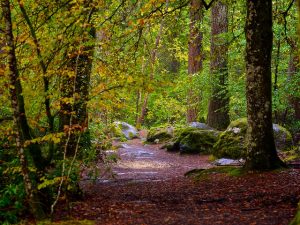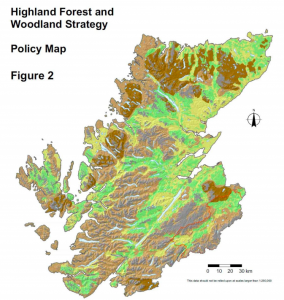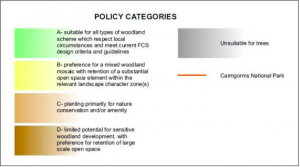
The Hermitage, CC Flickr Eng Yew Lee
The Scottish Government published a draft Forestry Strategy in September. But it’s not much of a strategy.
The document sets the following vision:
‘Scotland will have more forests and woodlands, which will be sustainably managed as a much greater part of the nation’s natural capital, providing a resilient, high quality and growing resource that supports a strong economy, a thriving environment, and healthy and empowered communities.’
So what is wrong with that?
What are trees for?

The draft strategy exhaustively lists the benefits of woodland – social, economic, and environmental. Trees are indeed good, on many different levels; but it doesn’t talk about the cultural barriers to woodland expansion, it sidesteps deer management issues, ignores grouse, and the words ‘tenant’ and ‘agroforestry’ and ‘woodland carbon code’ are absent.

The document also repeats the woodland targets established in the latest Climate Change Plan: 15000 hectares of yearly tree-planting rates by 2025 to achieve 21% of woodland cover by 2032. Why 21%? It doesn’t say. And where should all those hectares be planted? No words on that either. In a recent consultation on its Highland Forest and Woodland Strategy, the Highland Council included maps such as the one on the right to inform discussions and decisions about how land is used. Where are the maps in the Forestry Strategy? What would 21% woodland look like, as opposed to 18% (currently), or 30%? And what are the associated impacts on water, biodiversity, landscapes, and livestock? The lack of any mapping or modelling in the Strategy hinders an informed and nuanced discussion on forestry and wider land uses issues.
The draft Strategy repeatedly refers to the forestry opportunities presented by a low-carbon economy, but it provides very little information about how the wood we currently harvest is used, and how long on average the carbon is locked up, and there is no read-across to short rotation coppice and carbon capture and storage.
It doesn’t raise the question of how to balance incentives, financing and regulation to achieve planting targets equitably. At the moment landowners are getting paid three times over in planting grants, CAP basic payments and tax breaks, but other regimes are possible. We have been falling short of planting targets year on year, so it is clearly a challenging task, but the Strategy doesn’t put forward new solutions or new thinking.
Why does it matter?
Most importantly, the draft Strategy shows no expectation that anyone from the general public might read it, let alone respond to it. We should ask where the version is for schools to discuss, since in the year of young people it’s them who will be living with the consequences of land use decisions.
The core of the land reform agenda in Scotland is the democratisation of decision-making on land use, and it’s not clear how this consultation is designed to advance this agenda.
What we do with our land in the next ten years is crucial to meeting our 2050 climate targets, reversing the catastrophic decline in our biodiversity, and supporting our rural communities to thrive. This should be a big conversation, but the draft Forestry Strategy is going to reach the usual suspects.
Nourish Scotland is a membership organisation working towards food justice in Scotland and beyond.
Our members are hugely important to our success. If you share our vision of what a healthy and sustainable food future looks like, please consider joining us as a member today.